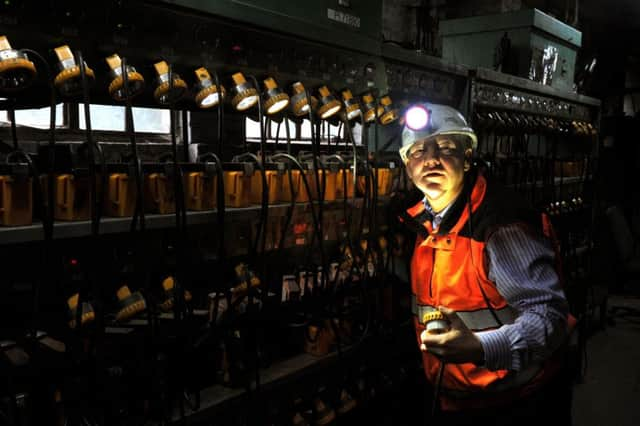25 years ago today... moment they killed King Coal


They were among the 28 pits in Yorkshire that had already been swept away when, 25 years ago today, the government passed what was to be a death sentence on the rest.
It fell to Michael Heseltine, president of the Board of Trade in John Major’s Cabinet, to swing the axe. Some 31 out of 50 remaining deep mines would close, he announced. 31,000 jobs would go at a stroke.
It was the biggest redundancy ever announced in Britain.


Advertisement
Hide AdAdvertisement
Hide AdAfter years of decline, the news was not a surprise but it was a shock.
“Politically there was no appetite for coal. Not after the strikes,” said Shaun McLaughlin, who heard the news, with the rest of his shift, at Stillingfleet pit in Selby.
At his National Union of Mineworkers headquarters in Sheffield, Arthur Scargill called for a mass mobilisation in defiance. But British Coal was one step ahead.
In a series of deals in the weeks leading up to his October 13 announcement to the Commons, Mr Heseltine had agreed with the company’s chairman, Neil Clarke, a detailed package of enhanced redundancy payments for the 31,000 - tempered with the threat to withhold them from any miner who walked out.


Advertisement
Hide AdAdvertisement
Hide AdMr Scargill had always maintained that the government had a secret hit-list of pits it wanted to close, but Mr Heseltine’s announcement went much further than even he had predicted.
“They didn’t actually say on the day which pits were going to go,” said Mr McLaughlin, who is now the head of engagement and collections at the National Coal Mining Museum in Wakefield.
“I was what we called a modern miner - I worked in a modern pit, so I hoped I would be OK. But people at the small pits were very worried.”
Sharlston, between Wakefield and Pontefract, would be one of the first on the hit list when the details of it finally emerged.
Advertisement
Hide AdAdvertisement
Hide AdIt had been in the 19th century at the centre of a model village, with 150 back-to-back houses in neat rows, and Mr McLaughlin had worked there during his 39-year career. By 1992, however, it was an anachronism. “It was like going back 100 years,” he said.
The biggest shock, 25 years ago, was not the announcement itself but the scale of it, he added.
“It was a very sombre day. Everyone feared for their livelihood.
“A lot retired but they went far too early. They got their redundancy terms but five or 10 years later they realised the money wouldn’t last long enough and they had to start looking for other jobs. By then they had been out of the market for years.”
Advertisement
Hide AdAdvertisement
Hide AdThe productive Kellingley pit near Selby, which had opened only in 1965, held out some hope for the industry.
“It supported the communities of Pontefract and Knottingley,” Mr McLaughlin said. “But Castleford bore the main brunt here.”
The Selby coalfield, the so-called “superpit” which included Stillingfleet, Wistow, Riccall, Whitemoor and Gascoigne Wood, was also expected to survive well beyond its eventual closure in 2004.
“I thought Selby would last a lot longer than it did,” said Mr McLaughlin. “Privatisation was the death knell because there weren’t enough mines left to take the peaks and troughs in production.
“There were lots of housing estates built around the mines - those were all devastated. And with the loss of the coal power station at Ferrybridge another source of livelihood went.”